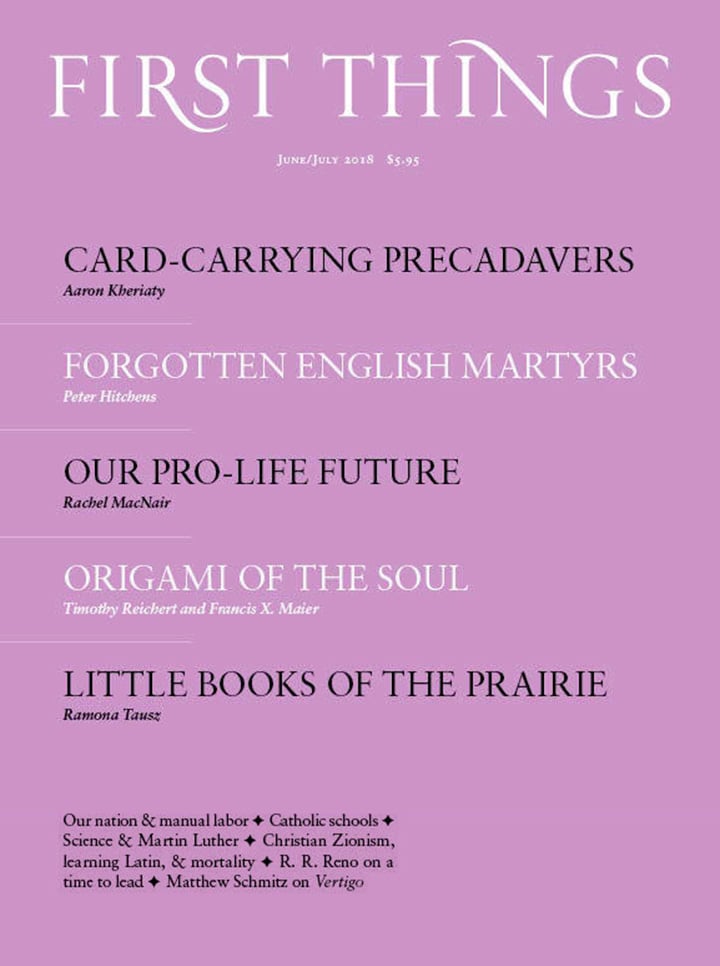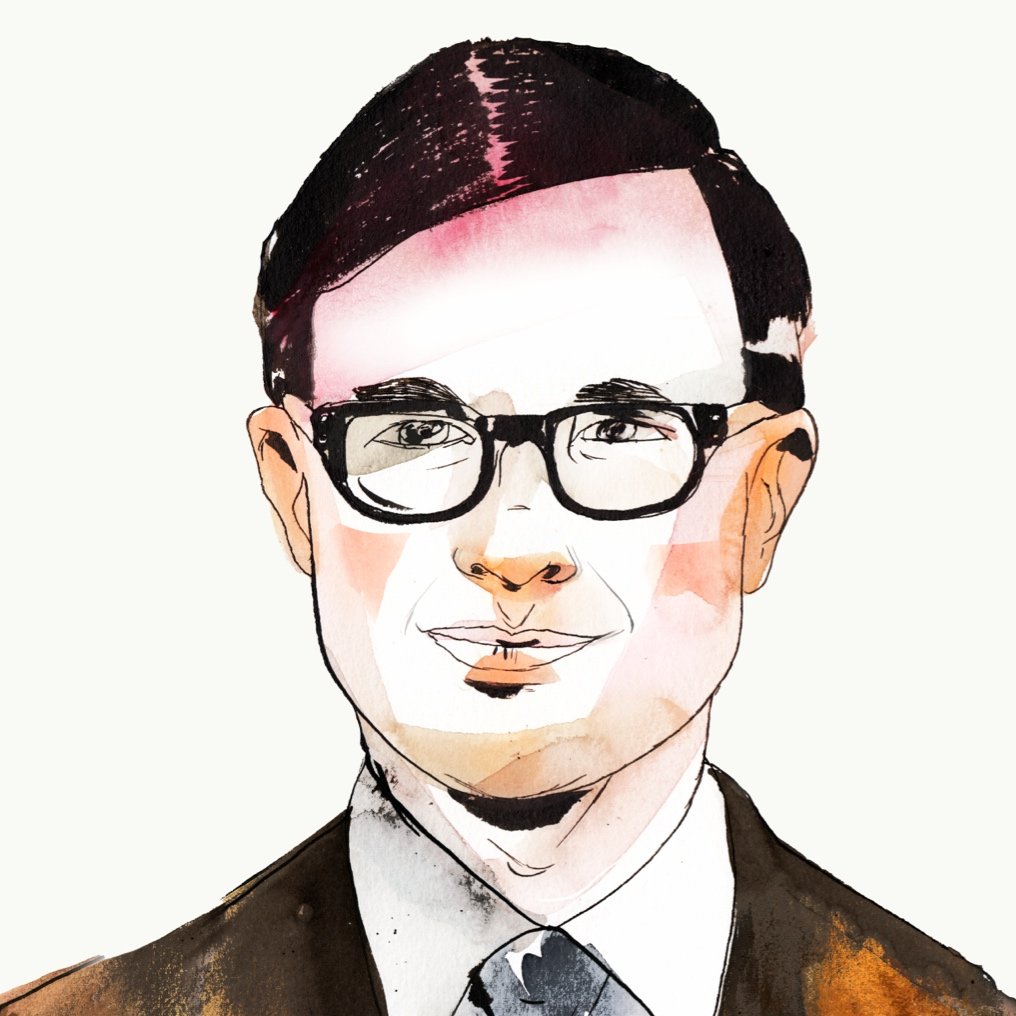When the Sight & Sound poll—the oldest and most prestigious film ranking—declared in 2012 that Vertigo was the greatest film ever made, Armond White denounced the film’s admirers for their “obsessive interest in pathology and soullessness.” James Wolcott dismissed the film as the “doomed-romantic tale of a bra-designer who pines for a retired detective.” Nick James proclaimed that “the new cinephilia seems to be not so much about films that strive . . . to make a grand statement, but more about works that have personal meaning.” All three critics suggested that the film lacked epic ambition—and all were wrong. Vertigo is Hitchcock’s great depiction of the modern inability to come to terms with the past.
For all its lushness—its rose parade of color, Edith Head’s ravishing costume design, the eternal recurrence of Bernard Herrmann’s score—Vertigo is a simple gothic tale. Jimmy Stewart plays Scottie, a retired detective who pursues the beautiful Madeleine Elster (Kim Novak) as she walks out of “sunny California” and into a shadow world of churches, graves, and bell towers. San Francisco is the ideal setting: a city wiped clean by the 1906 earthquake, now bustling with commercial energy and progressive ideas. At its edges are the remnants of a Catholic past: missions, churchyards, the distant sound of castanets . . .
Like all gothic tales, Vertigo reminds us that modernity is defined by the sharp distinction between present and past. We insist that we live in a time of technology, progress, and enlightenment—opposed to an earlier age of bafflement, odium, and blood. Our fantasies about this dark past both attract and repulse us. We indulge visions of a chthonic world where desire and cruelty run wild (dungeon—inquisitor—ravished maiden), then retreat to a comfortable present, blind to its untheatrical evils. If there is ever occasion to suspect that our society is bigoted in its scientism, casual about the killing of innocents, or indifferent to the abuse of weak flesh, we can ward off the thought by recalling that no one wears capes or intones Latin phrases. As long as the forces of religion and reaction can be kept at bay, we are sure that all will be well.
Hitchcock slowly reveals that the line between past and present, Old World and New, is less clear than we think. Gavin Elster (Tom Helmore) laments that “San Francisco’s changed.” He feels confined by the modern, mechanical city and longs for “the color and excitement, the power, the freedom” of bygone days. One of the freedoms he longs for is the ability to kill his wife, Madeleine—a fact Scottie will learn too late.
Elster tells Scottie that Madeleine has taken to visiting the lake in Golden Gate Park, where she stares at “the old pillars that stand on the far shore, the Portals of the Past.” These pillars were the portico of a Nob Hill mansion that fell in the quake, and were moved to the park to stand as a memorial to all that was lost. Madeleine’s husband takes her interest in the past as a sign of madness—or possession. He asks Scottie, “Do you believe that someone out of the past, someone dead, can enter and take possession of a living being?” Scottie, the rationalist, “the hard-headed Scot,” does not. He is naive enough to believe in psychiatry and doubt ghost stories.
Scottie follows Madeleine through the portals of the past. He tracks her to Mission Dolores, where she walks past the altar and visits a grave, shot through a ghostly fog lens; to the Legion of Honor, an art museum built on a potter’s field, where she views a portrait of the woman who seems to possess her; to the decrepit McKittrick Hotel, where residents appear and disappear without explanation; to the ramparts of Old Fort Point, where she falls into a trance, and into the bay. Finally, he drives her to Mission San Juan Bautista, where she scales a deadly tower with Scottie in pursuit. He falters because of his fear of heights. Hitchcock uses the “Vertigo effect” (dolly in and zoom out) to make it seem that he is being swallowed by the mouth of hell.
Scottie falls for the aristocratic Madeleine and scorns his ex-fiancée, Midge (Barbara Bel Geddes), with whom he had a sexless, chummy relationship. Midge is Madeleine’s opposite: a working woman who puts her faith in technology and therapy. (She assuages Scottie’s guilt about a man who died trying to save him: “The doctors explained . . . there’s no one to blame.”) She is an illustrator who helps the downcast by making ads for a brassiere that provides “revolutionary uplift”—a modern slogan if ever there was one.
Kim Novak famously wore no brassiere, and her character has no interest in revolutionary uplift. Madeleine is a rich, idle woman bearing a Proustian name and obsessed with the past. She fixes her blond hair to resemble that of Carlotta Valdes, the dead Spanish woman who is supposed to possess her. She dreams of “a village square, a green with trees, and an old whitewashed Spanish church with a cloister.” In this image of the place where she will eventually leap to her death, we are far from Midge’s commercial world. As Hitchcock said, “I simply couldn’t see anyone jumping from the tower of a modern Protestant church.”
Scottie wants to free Madeleine from her obsession. He tells her that her dream is really a memory of a museum she must have visited, a historic site “preserved exactly as it was a hundred years ago.” He takes her to the old mission and tries to reassure her by tapping on a hollow horse. Hear that? Nothing to fear! Yet Madeleine runs up the tower—and Scottie sees her plunge.
Believing his love is dead, Scottie develops his own fixation with the past. He returns to the places Madeleine once visited, until she herself reappears—though not on the terms Scottie wants. His new Madeleine, a shopgirl named Judy, has a ruder way of speaking, cheaper clothes, different hair. Rather than accept her as she is, Scottie remakes her into an effigy of the past. She must dye her hair blond and pin it just so. She must wear a certain skirt suit—gray, like the plaster horse at the mission.
In the film’s greatest shot, Scottie kisses his Madeleine as Hitchcock’s camera circles around them and the background shifts. Now they are in a cheap hotel room, lit by green neon light; now they are back at the mission, among the carefully preserved and lifeless items. We see that Scottie’s pleasures are necrophilic. He will only embrace what is dead.
Vertigo shows a world in which people seesaw between attempts to escape the past and fetishistic efforts to remake it. This is the dynamic typical of modern life. We run toward an enlightened future—and find it so dull we conjure a lurid past. We seek revolutionary uplift—then plunge into the abyss. Perverse as it seems, our ambivalence comes from a sound intuition. One cannot separate past from present, dogma from enlightenment, tradition from progress. We are attracted to both sides of this dichotomy because it is false.
Scottie fails to see this. “One final thing I have to do,” he says, “and then I’ll be free of the past.” He drags his Madeleine back to the mission, but instead of breaking free of the past, he fatally reenacts it. And so Hitchcock ends his film with a warning to progressive and reactionary alike: You cannot escape the past. Nor can you restore it.
Matthew Schmitz is senior editor of First Things and a Robert Novak Journalism Fellow.
In Praise of Translation
This essay was delivered as the 38th Annual Erasmus Lecture. The circumstances of my life have been…
Work Is for the Worker
In these early days of his pontificate, Pope Leo XIV has made one thing clear: The responsible…
Goddity
The Nativity of our Lord—born an infant, laid in a manger. It’s an utterly strange story: The…



